Are you planning a move, decluttering your home, commenced a renovation project, or simply running out of space? Whether you’re storing your washing machine during a house renovation or tucking away your microwave while you move abroad, it’s important to prepare properly. Storing appliances the right way can save you from costly repairs and make sure they’re ready to go when you need them again.
Improper appliance storage can lead to mould growth, electrical faults, and even damage caused by pests or rust. But the good news? With a bit of prep and the right appliance storage tips, you can keep your appliances in great condition, no matter how long they’re out of action.
Preparing Appliances for Storage
To pack appliances for storage, the first step we’d recommend is creating an Inventory
One of the most overlooked steps in storing appliances is keeping a good record of what you’re actually putting away. That’s where an inventory comes in. Creating a simple, organised list of your appliances makes it far easier to manage your items while they’re in storage, and even more importantly, it helps if anything goes wrong.
Moreover, if something goes missing or gets damaged, having proof of ownership and condition can be very helpful when making an insurance claim.
How to Prepare the Inventory?
Putting your inventory together doesn’t have to be complicated. Here’s a breakdown of how to do it:
- List every appliance you’re storing, from big white goods like dishwashers and tumble dryers to small items like coffee machines or toasters.
- Include a description and any identifying details, such as the make, model, and serial number.
- Photograph each item from a few angles. If there’s any existing damage, note it down.
- Label any accessories or cords and reference them in your notes so you don’t end up with mystery parts when unpacking.
Cleaning
Before your appliances go anywhere, give them a proper clean. This step is absolutely crucial in preventing mould, odours, and unwanted pests while in storage. A quick wipe-down won’t make any effect, especially if your appliances are going away for several weeks or even months.
Start with the interiors and exteriors. Use a mild cleaning solution like white vinegar mixed with water or a bit of baking soda for tougher grime. Make sure to remove all food particles from fridges, ovens, and microwaves, scrub away grease, and clean out filters, vents, and drawers, especially in washing machines and dishwashers.
Disconnecting
When you’re ready to move your appliances into storage, it’s important to disconnect them safely.
Unplug all appliances from their power sources and secure cables using twist ties or tape to stop them from getting tangled or bent. When plethora of cables jumble up, it may get chaotic and confusing, hence, label each cable.
Draining
Water and storage are never the best duo, so if you’re storing appliances that use water, draining is an absolute must. Drain tanks, hoses, pumps, and reservoirs in washing machines, dishwashers, steam ovens, and coffee machines. Also, check for hidden water, such as in filter chambers or trays. Once drained, leave components open to air dry completely
Defrosting
If you’re putting a fridge or freezer into storage, defrosting is another important step to take, and it should be done at least 24 to 48 hours in advance.
- Switch off the appliance and prop the door open
- Place towels around the base to absorb any water as the ice melts
- Remove drawers and shelves, and wipe them dry separately
- Clean the interior thoroughly after defrosting to avoid smells
- Make sure everything is 100% dry before packing the unit
Appliance-Specific Preparation Tips
Different appliances need different care when it comes to storage. While the general rules of cleaning, disconnecting and drying apply across the board, some items require a bit of extra attention.
Below, we break down how to safely prepare your most common household appliances for storage.
Preparing Refrigerators and Freezers
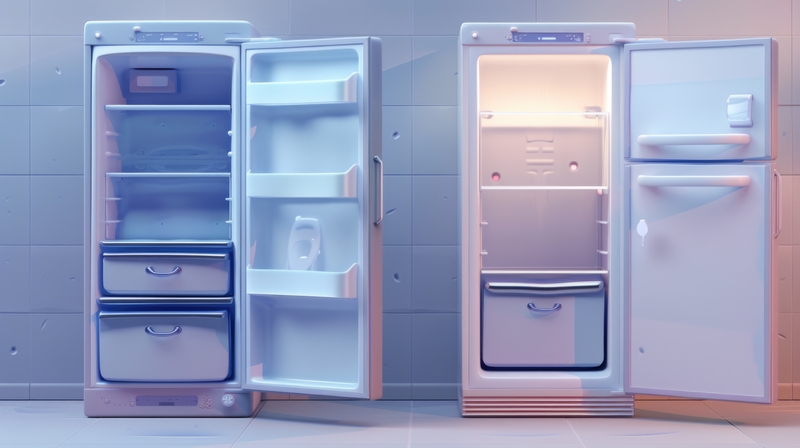
Fridges and freezers are among the trickiest items when it comes to storing appliances, so they’re worth doing properly.
- Remove all food items, even non-perishables, anything left behind can rot, leak, or attract pests.
- Clean shelves, drawers and door seals using a gentle baking soda and water solution. This helps remove odours and sanitise surfaces.
- Defrost completely at least 48 hours before moving. Make sure the appliance is completely dry before packing.
- Leave doors slightly ajar and tape them in place using painter’s tape or similar. This keeps air circulating and helps prevent mould and mildew.
- Store your fridge upright at all times to avoid damaging the internal coolant system.
Preparing Washing Machines and Dryers
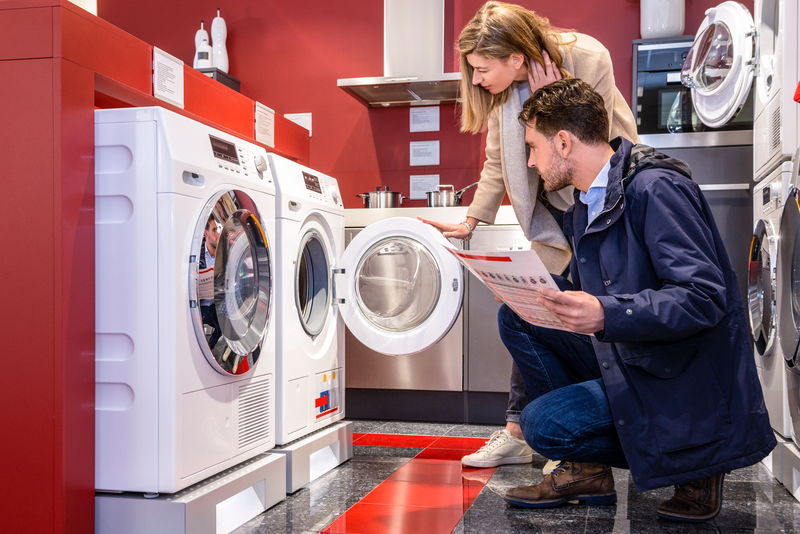
Washing machines and tumble dryers are big investments, so giving them a bit more attention, and handling with care before and during packing these appliances for storage.
You can run a final cycle with vinegar or a specialist machine cleaner to break down detergent build-up and kill bacteria. Don’t forget to drain the hoses completely, and if possible, store them inside the drum to keep everything together.
For dryers, remove lint from the lint trap and internal vents, leftover fluff could turn into a fire hazard or attract pests.
Preparing Dishwashers
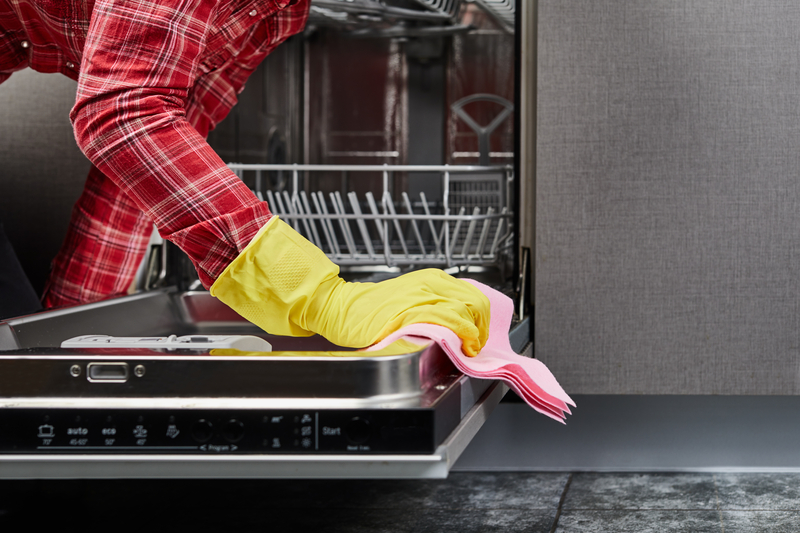
Dishwashers often get forgotten in the appliance prep list, but they’re just as important. Similar to that of a washing machine, run a short, hot cycle with either baking soda or bleach to clean and deodorise the interior.
Once the final cycle is done, disconnect and drain all water supply hoses. Let them dry completely to avoid mould growth. It is also advised to focus on cleaning out the filters and spray arms to prevent food debris from festering.
The final step is to leave the door open slightly once in storage, this allows any residual moisture to evaporate and keeps air circulating.
Preparing Ovens and Microwaves
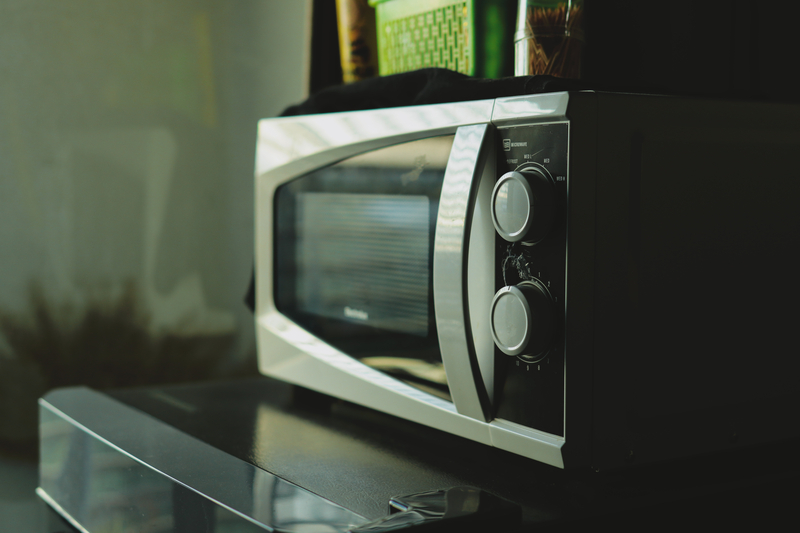
A greasy oven or crumb-filled microwave can quickly multiply the bacteria and gems, which can also lead to bad smells.
Hence, start with scrubbing the interior and exterior using a mild cleaner, baking soda and lemon juice to remove grease naturally. Unplug the appliance carefully, and secure the cord with a twist tie or tape.
Before packing ovens and microwaves, consider removing glass trays, racks, or removable panels and wrap them separately using bubble wrap or soft cloths.
Preparing Small Appliances (Toasters, Blenders, Coffee Makers)
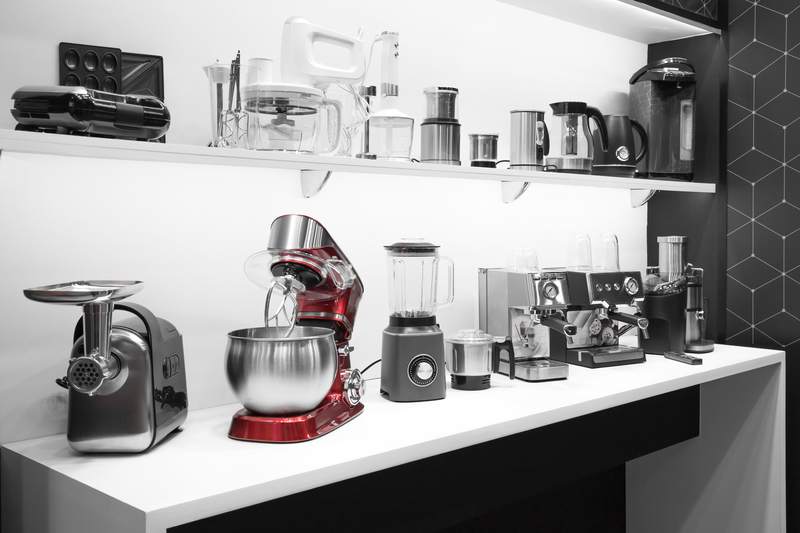
These little gadgets are easy to stash away, but they still need proper prep if you want them to last.
- Remove crumbs and residue from toasters, grills, or sandwich makers.
- Clean blades, filters, or jugs in blenders and coffee machines with warm soapy water.
- Make sure all parts are completely dry before packing.
- Wrap cords neatly and store them inside the appliance if possible or in a labelled freezer bag taped to the unit.
Choose the Right Storage Solution
You’ve now cleaned, drained, disconnected and wrapped your appliances. Now it’s time to choose the perfect storage space. Picking the right environment is just as important as the preparation itself when it comes to safe appliance storage. The wrong setting can undo all your careful efforts.
Let’s take a look at what to consider when selecting the ideal storage solutions for your household appliances.
Space
When it comes to appliance storage, the space of the unit matters. You want a unit that’s spacious enough to fit all your items without overcrowding.
Hence, make sure there’s enough room for airflow around each appliance, especially larger ones like fridges and freezers. This also allows for walkways or gaps to check items during storage if it’s long-term.
Overstuffed storage units can easily result in dents, scratches, and even machine damage, and that’s the opposite of what you want when you’re trying to pack and protect appliances in storage.
Climate-Controlled Units
Not all storage spaces are created equal. If you’re storing appliances for more than a few weeks, or if the weather is particularly hot or cold, you’ll want to look for a climate-controlled unit.
Why? Because, temperature and humidity can have a big impact on your household appliances such as humidity, which can cause rust, corrosion, or mould and Extreme temperatures can damage delicate components
Size Considerations
So, what size unit do you actually need? That depends on how many appliances you’re storing.
- For a small household, storing only a couple of items (like a washing machine and microwave), a 5’ x 5’ unit might be spacious enough.
- If you’re storing multiple large appliances, like a fridge, cooker, dishwasher, and dryer, you’ll likely need something larger, such as a 5’ x 10’ or even 10’ x 10’.
Get a free quote to understand your required storage unit.
Discover Expert Storage & Removal Services with SO Storage
At SO Storage, we know just how important it is to store your appliances properly. Whether you’re moving house, undergoing renovations, or simply freeing up space, we offer flexible and affordable storage solutions to keep your household items safe, clean, and protected. Our services are tailored to suit both residential and commercial needs, from convenient home storage solutions to reliable business storage services for overflow stock or seasonal equipment.
We also provide professional house removal services, making it easy to transport your appliances securely and stress-free. With climate-controlled units, various unit sizes, and expert advice on how to prepare appliances for storage, we’re here to ensure your belongings stay in top condition while in our care.
Ready to get started? Give us a call at +44 (0)1865 88 15 15 for personalised support or fill in our enquiry form for a free, no-obligation quote.
